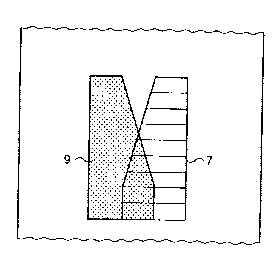Some of the information on this Web page has been provided by external sources. The Government of Canada is not responsible for the accuracy, reliability or currency of the information supplied by external sources. Users wishing to rely upon this information should consult directly with the source of the information. Content provided by external sources is not subject to official languages, privacy and accessibility requirements.
Any discrepancies in the text and image of the Claims and Abstract are due to differing posting times. Text of the Claims and Abstract are posted:
| (12) Patent: | (11) CA 2249398 |
|---|---|
| (54) English Title: | METHOD FOR THE MANUFACTURE OF LASERS WITH TAPERED GUIDE REGION |
| (54) French Title: | PROCEDE DE FABRICATION DE LASERS A GUIDE EN BISEAU |
| Status: | Expired and beyond the Period of Reversal |
| (51) International Patent Classification (IPC): |
|
|---|---|
| (72) Inventors : |
|
| (73) Owners : |
|
| (71) Applicants : |
|
| (74) Agent: | SMART & BIGGAR LP |
| (74) Associate agent: | |
| (45) Issued: | 2001-06-12 |
| (86) PCT Filing Date: | 1997-03-19 |
| (87) Open to Public Inspection: | 1997-10-02 |
| Examination requested: | 1998-09-21 |
| Availability of licence: | N/A |
| Dedicated to the Public: | N/A |
| (25) Language of filing: | English |
| Patent Cooperation Treaty (PCT): | Yes |
|---|---|
| (86) PCT Filing Number: | PCT/EP1997/001385 |
| (87) International Publication Number: | WO 1997036353 |
| (85) National Entry: | 1998-09-21 |
| (30) Application Priority Data: | ||||||
|---|---|---|---|---|---|---|
|
The laterally tapered active region (3, 3a) is obtained by means of
photolithography techniques, in two successive steps, by overlaying the images
of a first and a second mask (5, 6) each presenting a chamfer whose
inclination corresponds to the inclination of one of the sides of the tapered
region (3a).
On obtient une région active biseautée (3, 3a) à l'aide de techniques de photolithographie, en deux étapes successives, en superposant les images d'un premier et d'un second masque (5, 6) dont chacune présente un chanfrein dont l'inclinaison correspond à celle de l'un des côtés de la partie en biseau (3a).
Note: Claims are shown in the official language in which they were submitted.
Note: Descriptions are shown in the official language in which they were submitted.

2024-08-01:As part of the Next Generation Patents (NGP) transition, the Canadian Patents Database (CPD) now contains a more detailed Event History, which replicates the Event Log of our new back-office solution.
Please note that "Inactive:" events refers to events no longer in use in our new back-office solution.
For a clearer understanding of the status of the application/patent presented on this page, the site Disclaimer , as well as the definitions for Patent , Event History , Maintenance Fee and Payment History should be consulted.
| Description | Date |
|---|---|
| Inactive: IPC deactivated | 2011-07-29 |
| Time Limit for Reversal Expired | 2009-03-19 |
| Letter Sent | 2008-03-19 |
| Letter Sent | 2007-09-20 |
| Inactive: IPC from MCD | 2006-03-12 |
| Inactive: First IPC derived | 2006-03-12 |
| Inactive: IPC from MCD | 2006-03-12 |
| Inactive: IPC from MCD | 2006-03-12 |
| Grant by Issuance | 2001-06-12 |
| Inactive: Cover page published | 2001-06-11 |
| Letter Sent | 2001-06-07 |
| Inactive: Final fee received | 2001-03-12 |
| Pre-grant | 2001-03-12 |
| Letter Sent | 2001-01-02 |
| Notice of Allowance is Issued | 2001-01-02 |
| Notice of Allowance is Issued | 2001-01-02 |
| Inactive: Approved for allowance (AFA) | 2000-12-07 |
| Letter Sent | 2000-05-12 |
| Inactive: Multiple transfers | 2000-04-11 |
| Inactive: IPC assigned | 1998-12-01 |
| Classification Modified | 1998-12-01 |
| Inactive: First IPC assigned | 1998-12-01 |
| Inactive: Acknowledgment of national entry - RFE | 1998-11-17 |
| Application Received - PCT | 1998-11-13 |
| All Requirements for Examination Determined Compliant | 1998-09-21 |
| Request for Examination Requirements Determined Compliant | 1998-09-21 |
| Application Published (Open to Public Inspection) | 1997-10-02 |
There is no abandonment history.
The last payment was received on 2001-03-05
Note : If the full payment has not been received on or before the date indicated, a further fee may be required which may be one of the following
Please refer to the CIPO Patent Fees web page to see all current fee amounts.
| Fee Type | Anniversary Year | Due Date | Paid Date |
|---|---|---|---|
| Basic national fee - standard | 1998-09-21 | ||
| Registration of a document | 1998-09-21 | ||
| Request for examination - standard | 1998-09-21 | ||
| MF (application, 2nd anniv.) - standard | 02 | 1999-03-19 | 1999-02-24 |
| MF (application, 3rd anniv.) - standard | 03 | 2000-03-20 | 2000-02-16 |
| Registration of a document | 2000-04-11 | ||
| Registration of a document | 2001-02-12 | ||
| MF (application, 4th anniv.) - standard | 04 | 2001-03-19 | 2001-03-05 |
| Final fee - standard | 2001-03-12 | ||
| MF (patent, 5th anniv.) - standard | 2002-03-19 | 2002-03-05 | |
| MF (patent, 6th anniv.) - standard | 2003-03-19 | 2003-03-05 | |
| MF (patent, 7th anniv.) - standard | 2004-03-19 | 2004-03-04 | |
| MF (patent, 8th anniv.) - standard | 2005-03-21 | 2005-03-04 | |
| MF (patent, 9th anniv.) - standard | 2006-03-20 | 2006-03-01 | |
| MF (patent, 10th anniv.) - standard | 2007-03-19 | 2007-03-01 | |
| Registration of a document | 2007-06-19 |
Note: Records showing the ownership history in alphabetical order.
| Current Owners on Record |
|---|
| AVAGO TECHNOLOGIES GENERAL IP (SINGAPORE) PTE. LTD. |
| Past Owners on Record |
|---|
| RUIYU FANG |